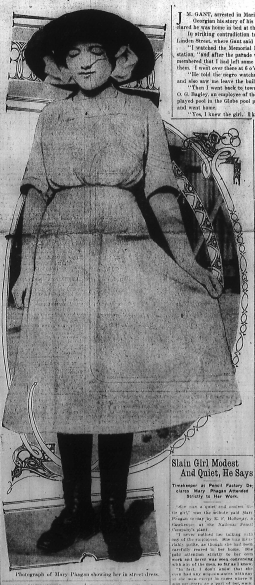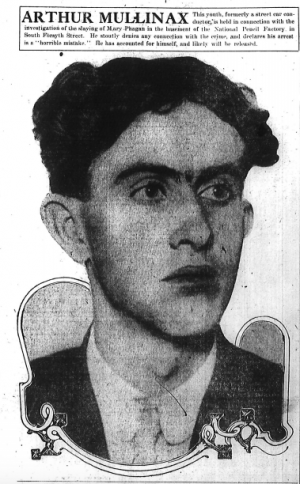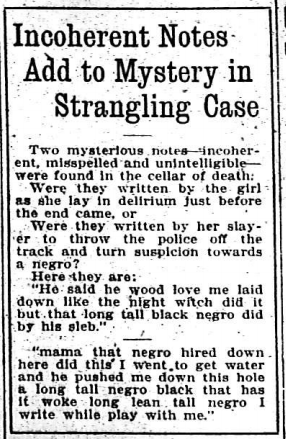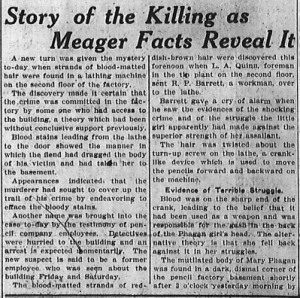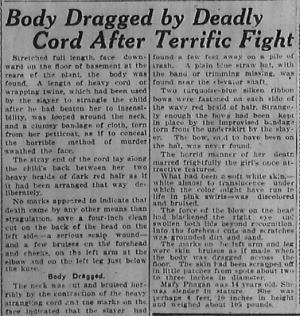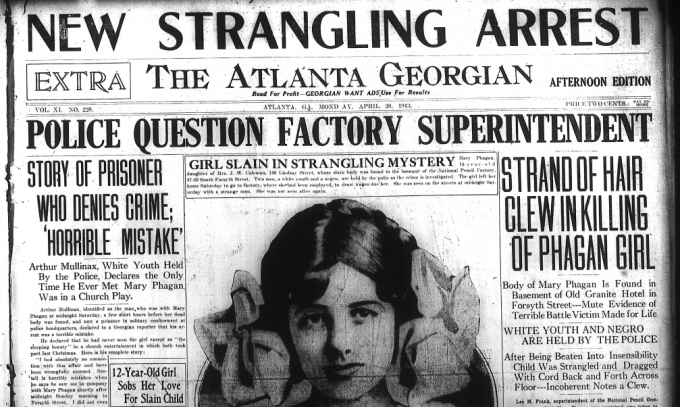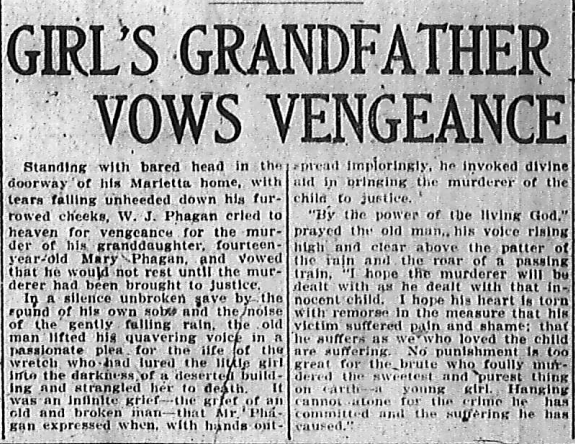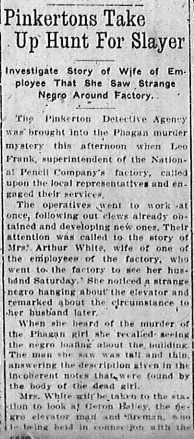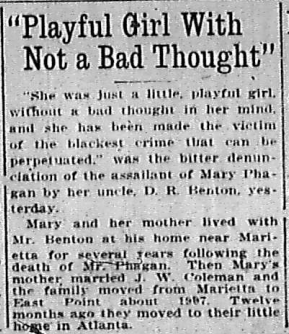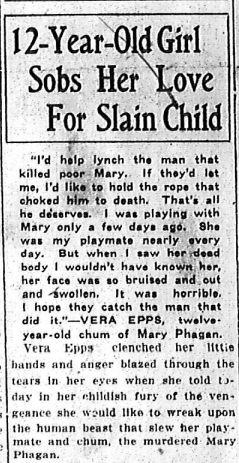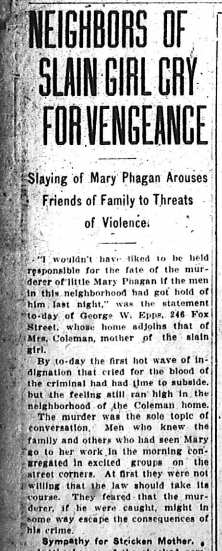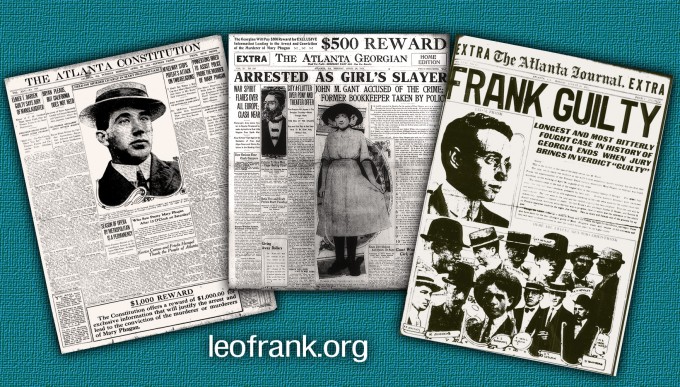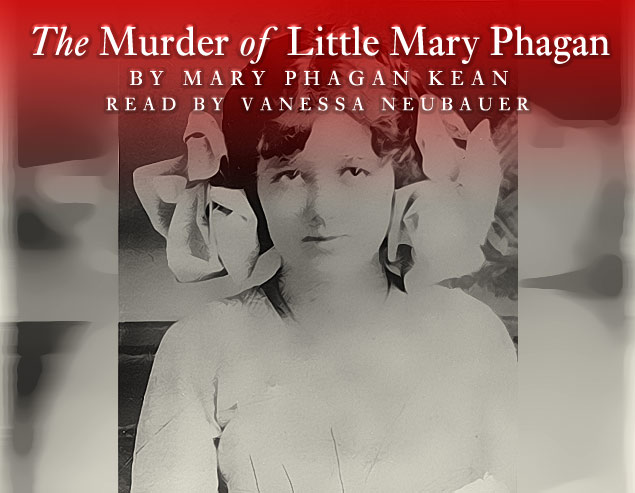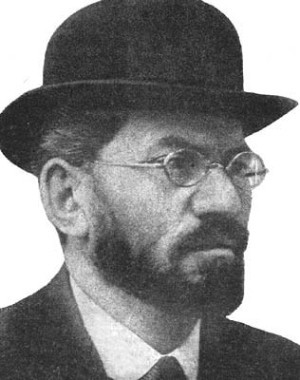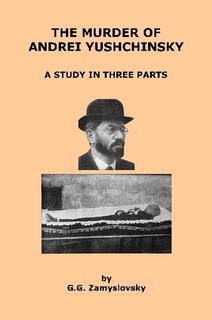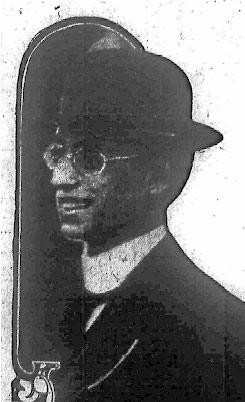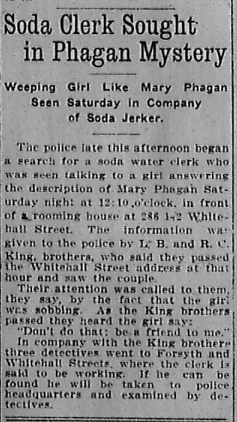 Another in our series of new transcriptions of contemporary articles on the Leo Frank case.
Another in our series of new transcriptions of contemporary articles on the Leo Frank case.
Atlanta Georgian
Monday, April 28th, 1913
Weeping Girl Like Mary Phagan Seen Saturday in Company of Soda Jerker.
The police late this afternoon began a search for a soda water clerk who was seen talking to a girl answering the description of Mary Phagan Saturday night at 12:10 o’clock, in front of a rooming house at 286 1-2 Whitehall Street. The information was given to the police by L. B. and R. C. King, brothers, who said they passed the Whitehall Street address at that hour and saw the couple.
Their attention was called to them, they say, by the fact that the girl was sobbing. As the King brothers passed they heard the girl say:
“Don’t do that; be a friend to me.”
In company with the King brothers three detectives went to Forsyth and Whitehall Streets, where the clerk is said to be working. If he can be found he will be taken to police headquarters and examined by detectives.
* * *
Atlanta Georgian, April 28th 1913, “Soda Clerk Sought in Phagan Mystery,” Leo Frank case newspaper article series (Original PDF)

